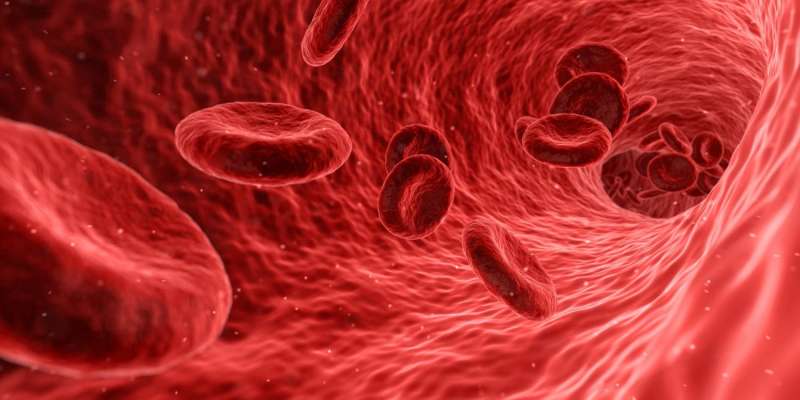Cellular repair response to treadmill test can predict cardiac outcomes

Future cardiac outcomes can be predicted by signs of cardiac stress that appear in the blood in response to exercise, Emory cardiologists report.
The results were published Wed Dec 4 in JAMA Cardiology.
Identifying patients with otherwise stable coronary artery disease (CAD) who are high-risk and would benefit from more intense or invasive interventions is currently a major theme in cardiology research. Often CAD patients undergo a treadmill exercise test to look for signs of blockages in their coronary arteries, and Emory researchers have been examining measurements that could provide additional information on which patients may be at highest risk of cardiac events such as heart attack.
In this study, Emory researchers looked at how circulating progenitor cells can disappear from the blood, presumably because they're needed in the heart. Circulating progenitor cells (or CPCs), which can be thought of as blood vessel "repair crews", are derived from the bone marrow and circulate in the blood at low levels.
In healthy people, physical exercise causes the cells to leave the bone marrow and enter the blood, because their job is repairing blood vessels. In people with coronary artery disease whose arteries are narrowed enough so that they develop ischemia (restriction of blood flow), more of the cells are diverted to the heart to repair the damage.
"A fall in CPC count after exercise appears to be an independent determinant of high risk in patients with stable coronary artery disease, even after adjusting for known clinical risk factors," says first author Kasra Moazzami, MD, cardiovascular research fellow at Emory Clinical Cardiovascular Research Institute. "The information gained from the changes in CPC counts during exercise may be more useful to cardiologists in risk stratifying these patients than the treadmill exercise test itself."
Moazzami is also affiliated with the Department of Epidemiology at Rollins School of Public Health. Arshed Quyyumi, MD, director of Emory Clinical Cardiovascular Research Institute, is senior author of the paper.
The Emory team took advantage of data from the Mental Stress Ischemia Prognosis Study, looking at 454 patients with stable coronary artery disease. They were divided into two groups, based on whether CPC counts increased or decreased during a treadmill exercise test. People whose CPC counts decreased were more than twice as likely to experience heart attack or die from heart disease over the next three years, even taking standard risk factors into account.
In particular, monitoring the CPC response to exercise provided more information than nuclear imaging for cardiac ischemia (restriction of blood flow). This was significant because imaging procedures can contribute to radiation exposure.
In previous research, the Emory team demonstrated that a decrease in CPC counts is a sign of ischemia. The current paper extended the findings to outcomes.
More information: Kasra Moazzami et al, Association Between Change in Circulating Progenitor Cells During Exercise Stress and Risk of Adverse Cardiovascular Events in Patients With Coronary Artery Disease, JAMA Cardiology (2019). DOI: 10.1001/jamacardio.2019.4528




















